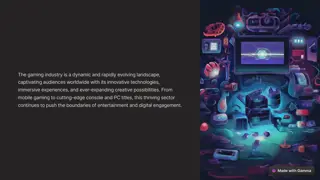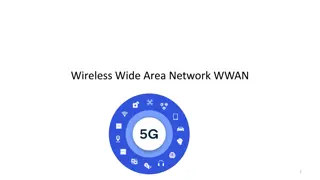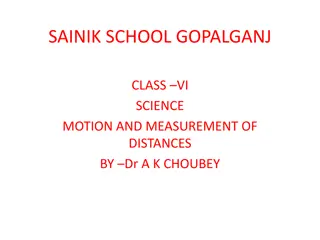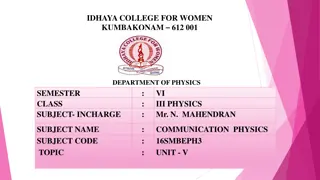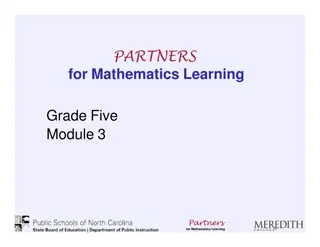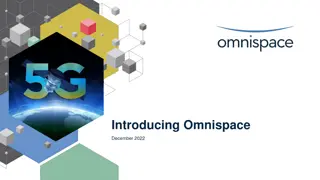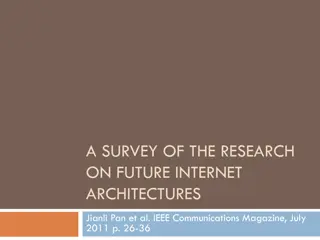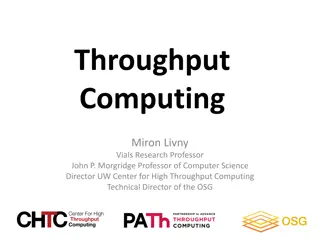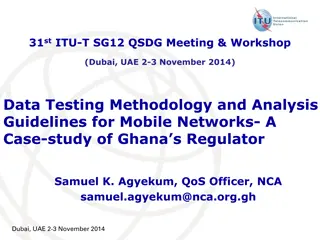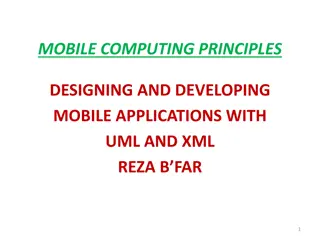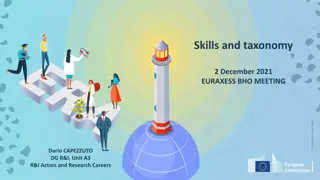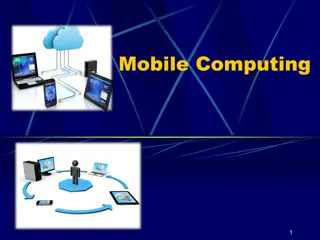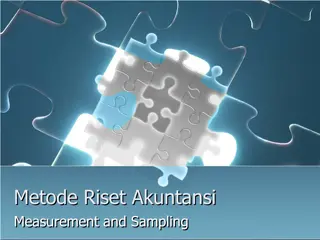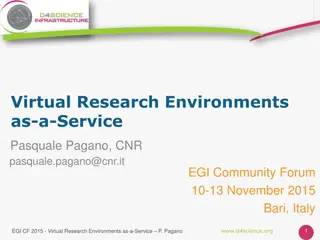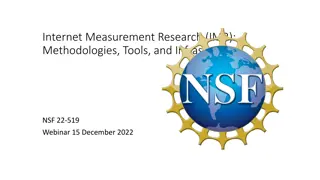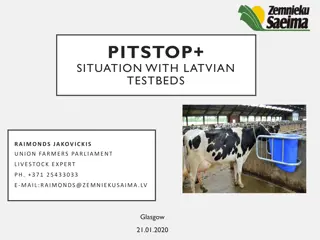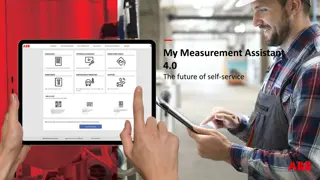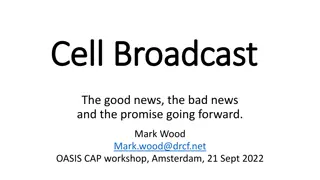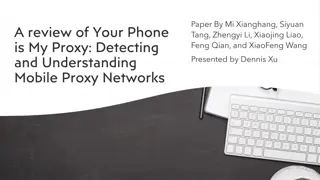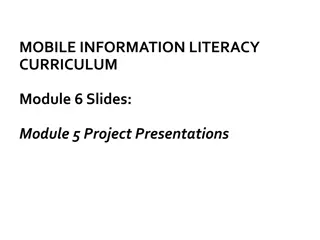End-to-End Mobile Network Measurement Testbeds Overview
Develop insights into existing testbeds and tools for mobile network measurement, highlighting goals, challenges, and measurement capabilities. Explore incentives for adoption, shared challenges, and categories of measurement tools.
Download Presentation

Please find below an Image/Link to download the presentation.
The content on the website is provided AS IS for your information and personal use only. It may not be sold, licensed, or shared on other websites without obtaining consent from the author.If you encounter any issues during the download, it is possible that the publisher has removed the file from their server.
You are allowed to download the files provided on this website for personal or commercial use, subject to the condition that they are used lawfully. All files are the property of their respective owners.
The content on the website is provided AS IS for your information and personal use only. It may not be sold, licensed, or shared on other websites without obtaining consent from the author.
E N D
Presentation Transcript
Survey of End-to-End Mobile Network Measurement Testbeds Utkarsh Goel (MSU), Mike P. Wittie (MSU), KC Claffy (CAIDA), and Andrew Le (Mintybit) Nov 12, 2014 2
Introduction Application responsiveness and user experience tied to end-to- end network performance E.g. live video, social gaming, interactive communications, and augmented reality Available network mobile network testbeds and measurement tools are limited in functionality and/or deployment scope We surveyed currently active efforts to capture a snapshot of existing work and identify directions for future work 3
Goals of E2E mobile measurement Developers Want to evaluate their application traffic from mobile devices to their servers Academic testbeds and paid services have limited geographic diversity Measurement tools have limited functionality Researchers Want flexibility to test various hypothesis High barrier to experimentation (expertise in other groups, old code, IRB approvals) Develop their own tools (5 in 2014, 7 in 2013, 5 in 2012-2009) Regulators Want to understand the availability, reliability, and performance of mobile networks over time Few tools have needed longevity and geographic diversity Develop their own tool (FCC Speed Test), but with somewhat limited functionality 4
Shared Challenges Incentives for adoption Bundling of measurement code (ALICE) Free devices (PhoneLab) Press coverage (FCC SpeedTest) Reciprocity (MITATE, Seattle) Volunteerism/curiosity Resource protection Tit-for-tat (MITATE) Hard limits (Seattle) User-privacy Ethical Privacy Guidelines for Mobile Connectivity Measurements by Ben Zevenbergen et al. (supported by M-Lab) 5
Measurement capabilities Details in our paper! Device selection criteria Resource usage limits Miscallaneous features 6
Measurement Tool Categories Measurement Tools Collect network performance metrics FCC Speed Test MySpeedTest MobiPerf ALICE Akamai Mobitest WindRider Application Testbeds Experiments with arbitrary traffic MITATE Seattle PhoneLab PortoLan LiveLabs Public datasets Open-access Curated Libraries Private-ish Traffic shaping Infrastructure Testbeds Exps. with network configuration SciWiNet PhantomNet Diagnosis Tools Discover network configuration NDT Netalyzr Sprint, T-Mobile Dual interfaces Browser-based Mobile app 7
Conclusions Limited support for detection of traffic discrimination at a large scale Seattle, PhoneLab, PortoLan?, WindRider (deprecated) Difficulty in supporting long-term studies Popularity of tools declines over time (FCC Speedtest, PhoneLab) Hard to support wide-area evaluation Single city deployments (PhoneLab, PortoLan) Small number of mobile nodes (Seattle > 500) Differences experiment configuration and execution Open-access (MITATE, Seattle) Curated (PhoneLab, PortoLan) 8
Conclusions Need a more concerted effort among developers, researchers, and regulators Developers do not know what tools are available Researchers work on different projects limited in scale Regulators need large scale, diverse data Grater adoption of (perhaps fewer) tools Funding should support new ideas and encourage their integration with existing testbeds 9
Acknowledgements Thanks to Justin Cappos Geoffrey Challen David Choffness Nick Feamster Walter Johnston for help in describing their work in our survey Valerio Luconi Jim Martin John Rula Mario Sanchez Hongyi Yao 10
Questions? mwittie@cs.montana.edu 11


